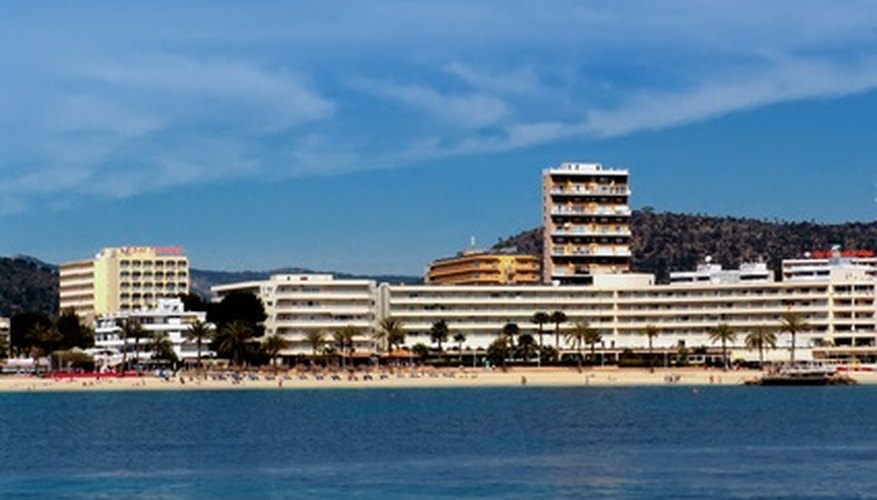Majorca (Mallorca in Spanish and Catalán) is the largest of the Balearic Isles, an autonomous community of Spain. Majorca lies off the eastern coast of Spain, 123 miles south of Barcelona, in the western Mediterranean Sea. With approximately 342 miles of beaches and an annual average of 300 days of sunshine, Majorca ranks as a major tourist destination.
Direct Economic Benefits
Permanent residents of Majorca numbered 790,736 in 2006, according to the Majorca, Spain website. Tourism is Majorca's leading source of revenue, with 11 million visitors a year responsible for at least half of the jobs on the island and about 80 per cent of the island's revenue. The Mallorca Travel Guide at Mallorca.net reports that 1,200 restaurants operate in Majorca to meet tourist demand. Tourist-related businesses directly generate wages, tips and taxes. Tourism indirectly creates construction jobs on the island.
- Permanent residents of Majorca numbered 790,736 in 2006, according to the Majorca, Spain website.
Cultural Benefits
Restoring and maintaining sites of historical and cultural interest is one way Majorca continues to attract tourists who want more than beaches. The gothic Palma de Mallorca Cathedral, begun in the capitol city of Palma in the 13th century and completed in 1601, features renovations done by the famous Spanish architect Antonio Gaudi in the early 20th century, as well as a ceramic mural and stained glass windows by famed artist Miquel Barceló. Money from tourist admission tickets keeps the cathedral operating.
Other sites of historical or architectural interest supported by tourism include the Banys Arabs, Moorish baths from the 10th century, and the Moorish palace now used by the Spanish royal family for vacation getaways. The popular tourist resort of Pollenca preserved examples of its Roman past for the education of residents and visitors alike.
- Restoring and maintaining sites of historical and cultural interest is one way Majorca continues to attract tourists who want more than beaches.
- Other sites of historical or architectural interest supported by tourism include the Banys Arabs, Moorish baths from the 10th century, and the Moorish palace now used by the Spanish royal family for vacation getaways.
Conservation Benefits
Sustainable tourism receives attention as Majorca's popularity among tourists grows. The Cabrera National Park, established in 1991, is an hour's boat ride south of Majorca. Diving is prohibited and boats must have permission to anchor in the park's waters to preserve the marine environment of the area. In 2005, the island boasted 40 "Blue Flag" beaches, a designation awarded by the Foundation for Environmental Education to beach areas that maintain quality and safety standards.
- Sustainable tourism receives attention as Majorca's popularity among tourists grows.
- In 2005, the island boasted 40 "Blue Flag" beaches, a designation awarded by the Foundation for Environmental Education to beach areas that maintain quality and safety standards.
Infrastructural Benefits
Facilities established to attract and please tourists also benefit the residents of Majorca. Airlines and ferries run frequently to carry tourists between Majorca and the Spanish mainland. Public transportation serves citizens and visitors, while roads provide access between the mountains and farmlands of the island's interior and the markets, towns and resorts on the coastline. Tourists demand modern communications, such as Internet access, and recreational facilities including scuba rentals. Residents use these infrastructure enhancements as well.
- Facilities established to attract and please tourists also benefit the residents of Majorca.
- Airlines and ferries run frequently to carry tourists between Majorca and the Spanish mainland.
